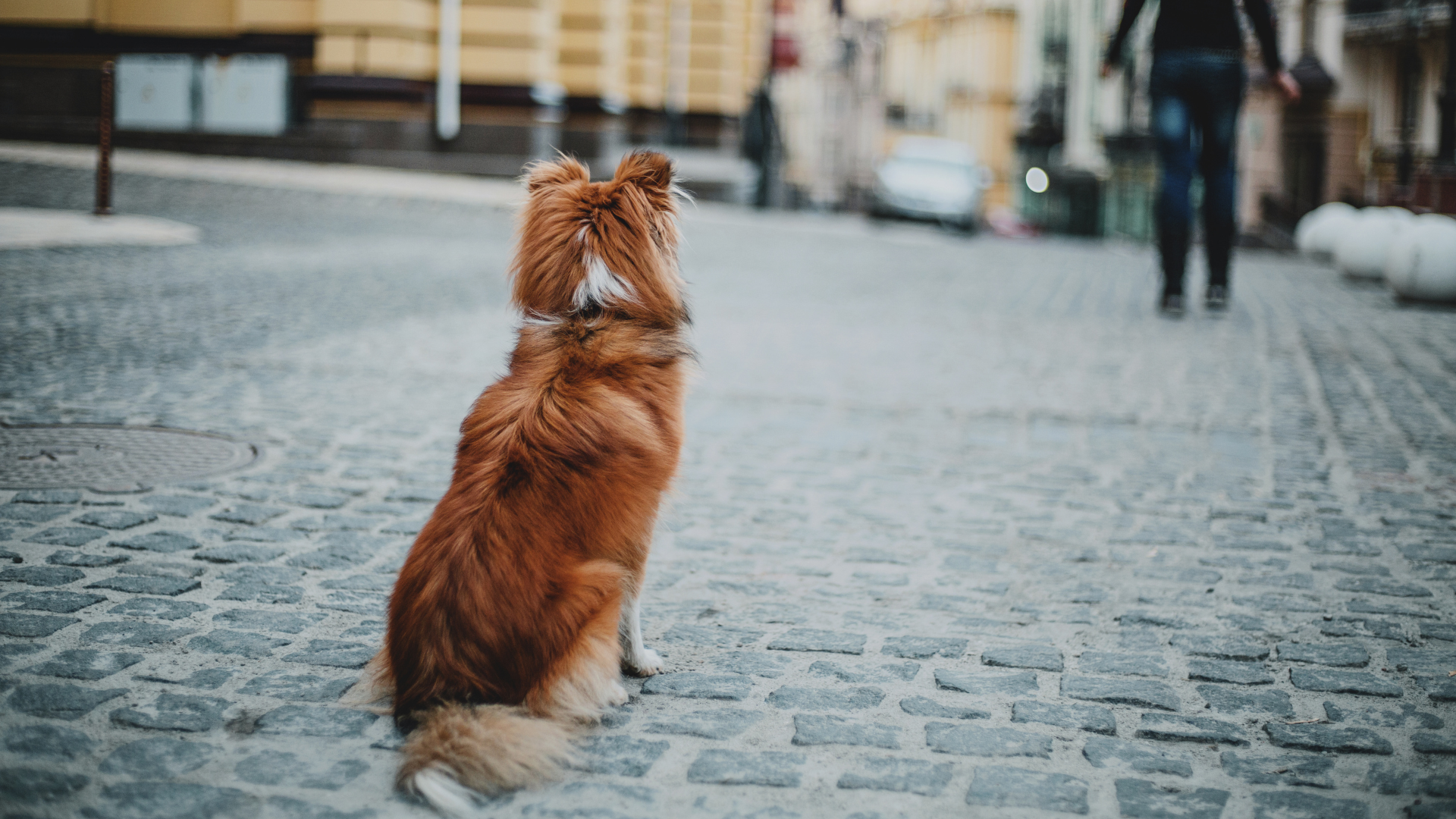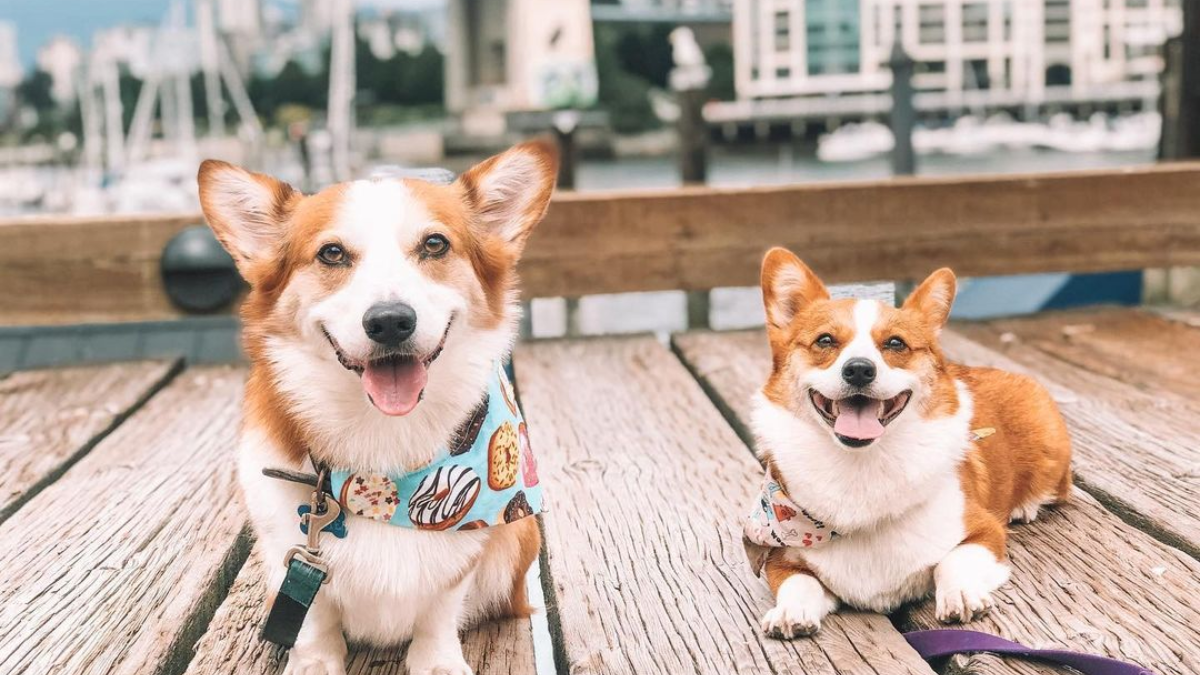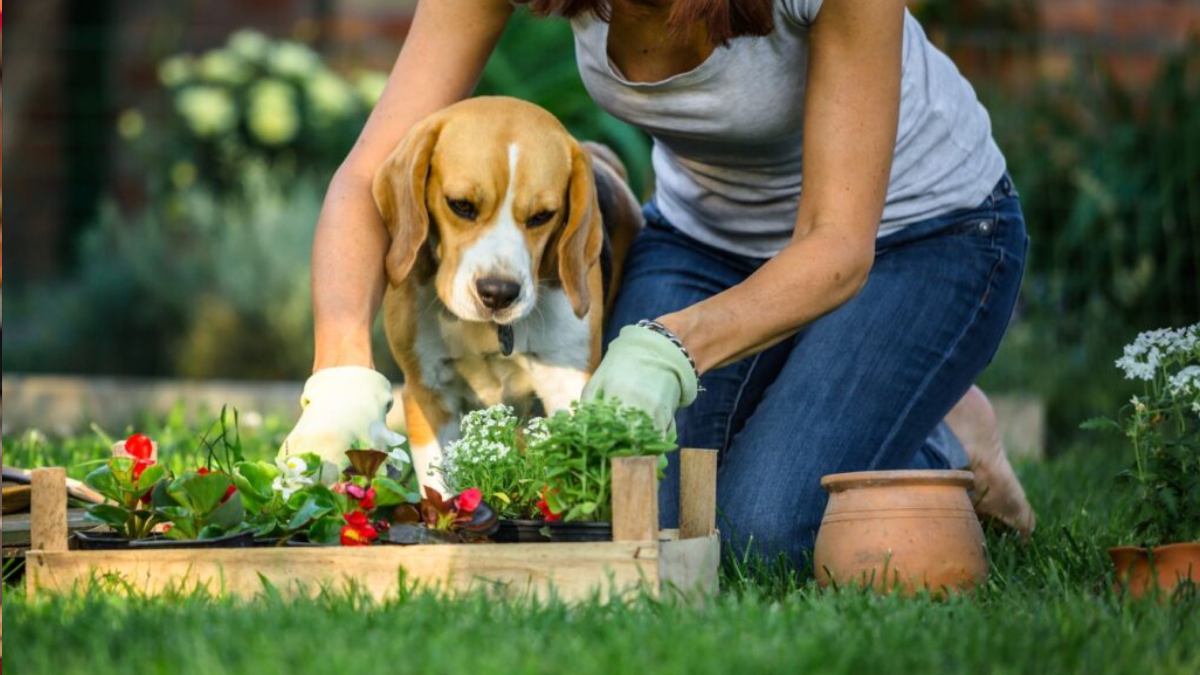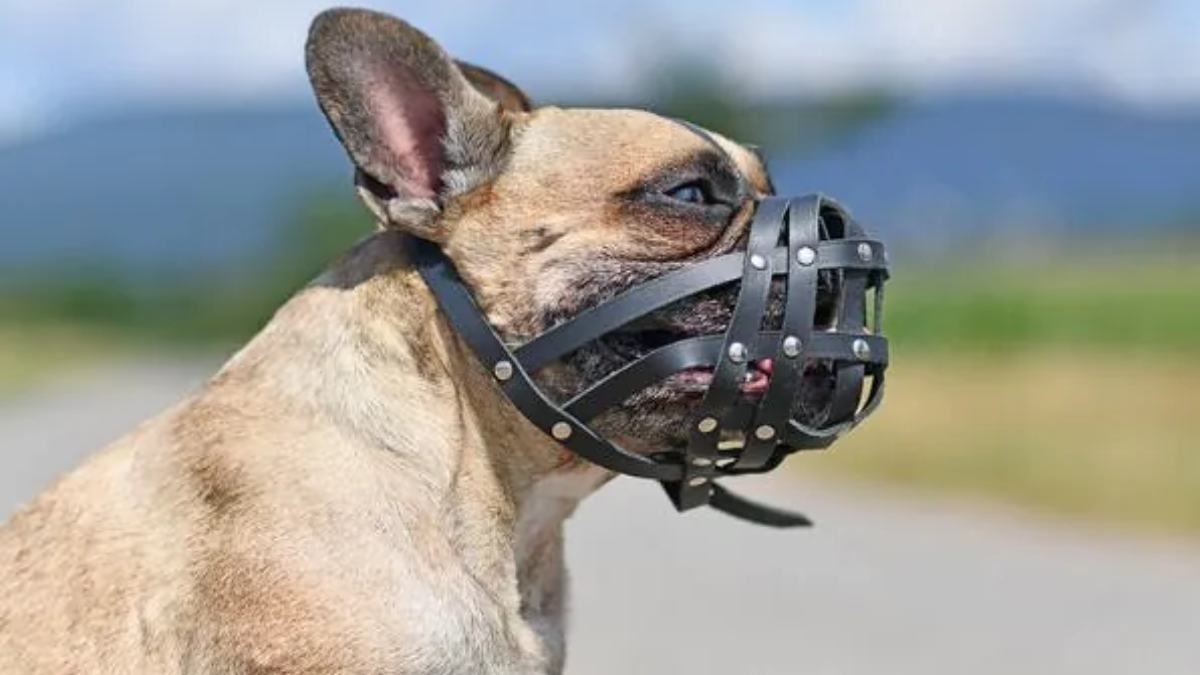Dogs are beloved pets and loyal companions to many urban dwellers. However, city life can pose numerous hazards to dogs, some of which may not be immediately apparent. Protecting Your Dog from Common Urban Hazards: Owners who want to ensure the safety and health of their furry friends should be aware of these risks and take proactive measures.

One of the most significant hazards for dogs in urban areas is traffic. Cars, buses, and bicycles can pose a serious threat to dogs that are allowed to roam off-leash or that escape from their yards. Even dogs that are leashed can be at risk if their owners are not vigilant about crossing streets safely. In addition, many urban areas have high levels of air pollution, which can exacerbate respiratory issues in dogs and lead to other health problems.
Understanding Urban Hazards for Dogs
Living in an urban environment can expose dogs to various hazards that they may not encounter in a rural setting. It is essential to understand these hazards to keep your furry friend safe and healthy. Here are some of the most common urban hazards for dogs:
Traffic
Busy roads and intersections pose a significant threat to dogs. Dogs that are not kept on a leash or allowed to roam freely in the streets are at risk of being hit by a car. Even dogs on a leash can be at risk if their owners are not paying attention to the traffic. It is essential to always keep your dog on a leash and make sure to cross the street at designated crosswalks.
Toxic Substances
Urban environments are full of toxic substances that can be harmful to dogs. These substances include antifreeze, pesticides, and cleaning products. Dogs can accidentally ingest these substances, leading to serious health problems. It is crucial to keep these substances out of reach of your dog and to be aware of any potential hazards in your neighbourhood.

Extreme Temperatures
Urban environments can be extreme in temperature, both hot and cold. Dogs that are left outside in the heat without access to shade or water can suffer from heatstroke. Similarly, dogs left outside in the cold can suffer from hypothermia. It is essential to provide your dog with adequate shelter and access to water in extreme temperatures.
Noise Pollution
Urban environments can be noisy, with sounds such as traffic, construction, and sirens. Dogs can be sensitive to noise and may become anxious or stressed by loud noises. It is important to provide your dog with a quiet and comfortable space to retreat to when they become overwhelmed by noise pollution.
By understanding these common urban hazards for dogs, you can take steps to protect your furry friend and keep them safe and healthy in the city.
Traffic and Vehicle Safety
Leash Training for Busy Streets
When walking a dog in an urban environment, it is important to keep them on a leash at all times. This not only ensures their safety but also the safety of other pedestrians and drivers. Leash training should begin at a young age and should be reinforced regularly. Dogs should be trained to walk calmly on a leash and to stay close to their owner, especially in busy areas.
Avoiding Accidents at Intersections
Intersections can be particularly dangerous for dogs and their owners. Dogs should be trained to stop and sit at intersections and to wait for their owner's signal before crossing the street. It is important to be aware of traffic signals and to only cross when the pedestrian signal is green.

To further ensure safety, owners should consider using reflective gear on their dogs' collars or leashes to make them more visible to drivers, especially during low-light conditions. Additionally, it is important to keep a firm grip on the leash and to be aware of any potential hazards, such as uneven pavement or debris on the road.
Overall, by practicing safe leash training and being vigilant at intersections, owners can help protect their dogs from common urban hazards related to traffic and vehicles.
Toxic Substances and Plants
Common Urban Toxins
Dogs are curious creatures and love to explore their surroundings. However, some common substances and plants found in urban areas can be toxic to dogs. Dog owners need to be aware of these hazards and take steps to prevent their pets from coming into contact with them.
One of the most common toxins found in urban areas is antifreeze. This substance contains ethylene glycol, which is extremely toxic to dogs. Even small amounts can be lethal. Dog owners should make sure to keep antifreeze out of reach and clean up any spills immediately.
Other common toxins include pesticides, herbicides, and fertilizers. These chemicals can be found in parks, lawns, and gardens. Dog owners should avoid walking their dogs on treated lawns and keep their pets away from areas where these chemicals have been applied.
Dog-Safe Urban Gardening
Many urban dog owners enjoy gardening, but it's important to choose plants that are safe for dogs. Some common plants, like lilies and tulips, can be toxic to dogs if ingested. Dog owners should research which plants are safe for their pets and avoid planting anything that could be harmful.

Additionally, some dogs like to dig and may accidentally ingest soil or mulch. To prevent this, dog owners can use raised garden beds or cover the soil with a layer of rocks or gravel.
By being aware of common toxins and choosing dog-safe plants, urban dog owners can help keep their pets healthy and safe.
Interactions with Wildlife and Stray Animals
Living in an urban area can bring your dog into contact with a variety of wildlife and stray animals. While some of these interactions may be harmless, others can pose a serious threat to your dog's health and safety. Here are some common urban hazards to watch out for:
Wildlife
Encounters with wildlife can be unpredictable and potentially dangerous. Depending on where you live, your dog may come into contact with animals such as raccoons, skunks, coyotes, or even bears. It's important to keep your dog on a leash and under control at all times, especially when walking in areas where wildlife is known to be present.
In addition, make sure your yard is secure and free of any potential entry points for wildlife. This can include securing garbage cans, removing any potential food sources, and keeping your dog indoors during times when wildlife is most active.
Stray Animals
Stray animals such as cats and dogs can also pose a risk to your dog's health and safety. Stray animals may carry diseases or parasites that can be transmitted to your dog through contact or bites. In addition, encounters with aggressive or territorial stray animals can lead to injuries or fights.
To protect your dog from stray animals, make sure they are up-to-date on all necessary vaccinations and parasite preventatives. Keep your dog on a leash and under control at all times when outside, and avoid areas where stray animals are known to be present. If you encounter a stray animal, do not approach it and contact animal control or a local rescue organization for assistance.
By being aware of these common urban hazards and taking steps to protect your dog, you can help ensure their health and safety in any environment.
Preventing Heatstroke in an Urban Environment
Dogs are at a higher risk of heatstroke in urban environments due to the lack of shade, concrete and asphalt surfaces that retain heat, and limited access to water. Heatstroke can be life-threatening, so it's essential to take preventative measures to keep your dog safe.
Here are some tips to prevent heatstroke in an urban environment:
- Avoid walking your dog during the hottest parts of the day. Instead, opt for early morning or late evening walks when temperatures are cooler.
- Always bring water for your dog on walks and offer it frequently. Consider carrying a collapsible water bowl for convenience.
- Avoid hot surfaces such as asphalt and concrete, which can burn your dog's paws. Opt for grassy areas or shaded paths instead.
- Consider purchasing dog booties to protect your dog's paws from hot surfaces.
- Never leave your dog in a parked car, even for a short amount of time. The temperature inside a car can rise rapidly and cause heatstroke.
- Keep your home cool by using air conditioning or fans, and provide your dog with a cool, shaded area to rest.
- Watch for signs of heatstroke, such as excessive panting, drooling, vomiting, and lethargy. If you suspect your dog has heatstroke, seek veterinary care immediately.
By following these preventative measures, you can protect your dog from the dangers of heatstroke in an urban environment.
Navigating Crowded Public Spaces
When it comes to navigating crowded public spaces with your dog, there are a few things to keep in mind to ensure their safety and comfort. Here are some tips to help you and your furry friend navigate the hustle and bustle of urban life.

Socialization and Behavior Training
One of the most important things you can do to prepare your dog for crowded public spaces is to socialize them early and often. This means exposing them to a variety of people, places, and other dogs from a young age. Socialization helps your dog become more comfortable and confident in new environments, which can help prevent anxiety and aggression.
In addition to socialization, behavior training is also essential. Teaching your dog basic commands like "sit," "stay," and "come" can help you keep them under control in busy areas. It's also important to teach your dog not to pull on the leash, as this can be dangerous in crowded spaces.
Dog-Friendly Areas in the City
Another way to make navigating crowded public spaces easier is to seek out dog-friendly areas in the city. Many cities have designated dog parks where your furry friend can run and play off-leash. Some cities also have dog-friendly cafes, restaurants, and shops where you can bring your dog along.
When visiting these areas, it's important to follow the rules and regulations. Make sure your dog is up to date on their vaccinations and is wearing a collar with identification tags. Always keep an eye on your dog and be prepared to intervene if they become aggressive or starts to misbehave.
By following these tips, you can help keep your dog safe and comfortable in crowded public spaces. Remember to always be aware of your surroundings and your dog's behavior, and don't be afraid to seek out dog-friendly areas to make your urban adventures more enjoyable.
Protective Gear for City Dogs
Living in a city can expose dogs to various hazards such as traffic, sharp objects, and extreme weather conditions. To protect your furry friends from these dangers, it is important to equip them with the right protective gear. Here are some essential items to consider:
Collars and Leashes
A sturdy collar and leash are necessary for city dogs to prevent them from running into traffic or getting lost. Choose a collar that fits comfortably and securely around your dog's neck and a leash that is strong enough to hold them back if they try to chase after something.

Harnesses
Harnesses are a great alternative to collars, especially for dogs that pull or have respiratory issues. They distribute pressure evenly across the chest and back, reducing the risk of injury. Look for a harness that is adjustable and made of durable materials.
Boots
City streets can be rough on a dog's paws, with broken glass, hot pavement, and other hazards that can cause cuts and burns. Boots can provide protection and prevent injuries. Make sure to choose boots that fit well and have a non-slip sole.
Jackets and Sweaters
Extreme weather conditions can be dangerous for dogs, especially those with short or thin coats. Jackets and sweaters can keep them warm and dry during cold and rainy seasons. Look for waterproof and breathable materials that fit snugly but allow for movement.
Muzzles
Muzzles are not just for aggressive dogs. They can also be used to prevent dogs from eating or picking up hazardous objects on the ground. Look for a muzzle that fits comfortably and allows your dog to pant and drink water.
By providing your city dog with the right protective gear, you can ensure their safety and well-being in a challenging environment.
Emergency Preparedness

First Aid for Dogs
It's important to know basic first aid for dogs in case of an emergency. The following are some tips to keep in mind:
- Keep a first aid kit for your dog handy, containing items such as gauze, bandages, scissors, and antiseptic wipes.
- If your dog is bleeding, apply pressure to the wound with a clean cloth or gauze.
- If your dog is choking, try to remove the object from their mouth with your fingers or a pair of tweezers. Do not attempt to remove an object that is deeply lodged in the throat.
- If your dog is unconscious, check their breathing and pulse. If necessary, perform rescue breathing and CPR.
Identifying the Nearest Vet Clinic
In case of an emergency, it's important to know the location of the nearest vet clinic. Here are some ways to identify the nearest vet clinic:
- Use a search engine to find nearby vet clinics and their contact information.
- Keep a list of emergency vet clinics in your area and their hours of operation.
- Ask your regular vet for recommendations on emergency clinics in case they are closed or unavailable.
By being prepared and having a plan in place, you can ensure that your dog receives the necessary care in case of an emergency.
Conclusion:
In conclusion, prioritizing the safety of our canine companions in urban environments is paramount. Protecting Your Dog from Common Urban Hazards requires diligence and proactive measures. By identifying potential dangers such as busy streets, toxic substances, and aggressive animals, pet owners can implement effective strategies to mitigate risks. Ensuring proper leash training, using reflective gear during walks, and supervising outdoor activities are essential practices to safeguard dogs from accidents and injuries.
Moreover, maintaining a clean and secure living space free from harmful substances and small objects can prevent accidental ingestion or choking hazards. Regular veterinary check-ups and vaccinations also play a crucial role in protecting dogs from infectious diseases prevalent in urban settings.
Additionally, providing mental and physical stimulation through interactive toys, training sessions, and regular exercise can help alleviate boredom and prevent behavioral problems stemming from urban stressors.
Ultimately, by staying informed and proactive, pet owners can create a safe and enriching environment for their furry friends to thrive in urban landscapes. Protecting Your Dog from Common Urban Hazards is not just a responsibility; it's an expression of love and care for our beloved pets.




